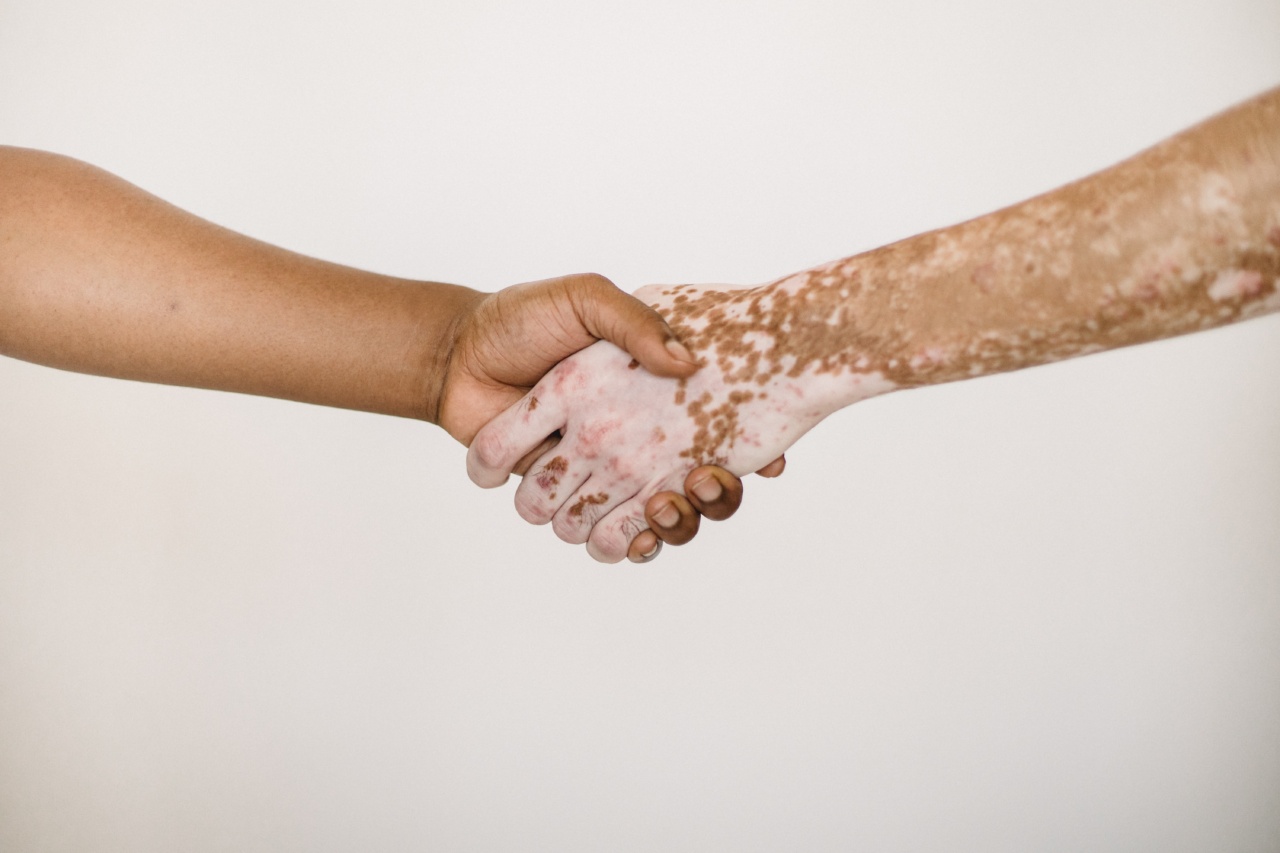Psoriasis is a chronic autoimmune condition that affects the skin. It is characterized by the rapid buildup of skin cells that leads to the formation of raised, red, and scaly patches on various parts of the body.
These patches, also known as plaques, can be itchy, painful, and may crack and bleed. Psoriasis can occur on any part of the body, but it most commonly affects the scalp, elbows, knees, and lower back.
Types of Psoriasis
There are several different types of psoriasis, each with its own unique characteristics:.
1. Plaque Psoriasis
This is the most common form of psoriasis, accounting for about 80% of all cases. Plaque psoriasis typically presents as raised, inflamed patches covered with a silvery-white buildup of dead skin cells.
2. Guttate Psoriasis
Guttate psoriasis is often triggered by a bacterial infection, such as strep throat. It is characterized by small, teardrop-shaped lesions that appear on the arms, legs, and trunk. This type of psoriasis is more common in children and young adults.
3. Inverse Psoriasis
Inverse psoriasis occurs in the folds of the skin, such as the armpits, groin, and under the breasts. It appears as smooth, red patches that are not typically covered in scales. This type of psoriasis is worsened by friction and sweating.
4. Pustular Psoriasis
Pustular psoriasis is characterized by the presence of small, pus-filled blisters surrounded by red skin. It can be localized to certain areas of the body, such as the hands and feet, or it can be widespread.
Pustular psoriasis can be accompanied by fever, chills, and severe itching.
5. Erythrodermic Psoriasis
Erythrodermic psoriasis is a rare and severe form of psoriasis that affects the entire body. It causes widespread redness, intense itching, and peeling of the skin. This type of psoriasis can be life-threatening and requires immediate medical attention.
Possible Causes of Psoriasis
The exact cause of psoriasis is still unknown, but various factors are believed to contribute to its development:.
1. Genetics
Psoriasis has a genetic component, as it tends to run in families. Certain genes are thought to play a role in the development of the condition, although more research is needed to understand the specific mechanisms involved.
2. Immune System Dysfunction
Psoriasis is considered an autoimmune disorder, meaning the immune system mistakenly attacks healthy cells, including the skin cells. This abnormal immune response leads to the rapid turnover of skin cells and the formation of psoriatic plaques.
3. Triggers
While genetics and immune system dysfunction play a significant role in the development of psoriasis, certain triggers can exacerbate or trigger flare-ups.
Common triggers include stress, skin injuries (such as cuts or sunburns), infections, certain medications, smoking, and heavy alcohol consumption.
Symptoms and Diagnosis
Psoriasis symptoms can vary from person to person, but some common signs and symptoms include:.
1. Red, inflamed patches of skin
The affected skin usually appears raised, with a silvery-white buildup of dead skin cells.
2. Itching or burning sensation
The affected skin may be itchy, painful, or feel like it’s burning.
3. Dry, cracked skin
Psoriasis can cause the skin to become dry and cracked, leading to discomfort and potential bleeding.
4. Thickened or ridged nails
In some cases, psoriasis can affect the nails, causing them to become thickened, ridged, or pitted.
5. Joint pain and swelling
About 30% of people with psoriasis also develop a condition known as psoriatic arthritis, which causes joint pain, stiffness, and swelling.
Treatment Options
While there is currently no cure for psoriasis, various treatment options can help manage the symptoms and improve the quality of life for individuals with psoriasis. These include:.
1. Topical Treatments
Topical treatments, such as corticosteroids, vitamin D analogs, retinoids, salicylic acid, and moisturizers, can be applied directly to the affected skin to reduce inflammation, remove scales, and relieve itching.
2. Phototherapy
Phototherapy involves exposing the skin to controlled doses of ultraviolet light, either from natural sunlight or artificial sources. This treatment can help slow down the rapid turnover of skin cells and reduce inflammation.
3. Systemic Medications
If psoriasis is severe or resistant to other treatments, systemic medications may be prescribed.
These include oral medications, such as retinoids, methotrexate, and cyclosporine, as well as biologic agents, such as TNF-alpha inhibitors or IL-17 inhibitors.
4. Lifestyle Modifications
Adopting a healthy lifestyle can also help manage psoriasis symptoms. This includes maintaining a balanced diet, avoiding triggers like stress and certain medications, managing weight, and quitting smoking.
Living with Psoriasis
Living with psoriasis can pose physical and emotional challenges. The visible symptoms of psoriasis may lead to self-consciousness, lowered self-esteem, and even depression.
It is important for individuals with psoriasis to seek support from healthcare professionals, join support groups, and educate themselves about the condition to better manage the impact on their daily lives.
Conclusion
Psoriasis is a complex autoimmune condition that affects millions of people worldwide. While its exact cause remains unknown, ongoing research continues to unravel the mysteries surrounding this chronic skin condition.
By understanding the different types of psoriasis, possible causes, symptoms, and available treatments, individuals with psoriasis can better manage their condition and lead fulfilling lives.




























